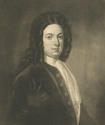 During this period a distinction gradually began to appear between producers, wholesalers and retailers, reflecting the growth in manufacturing and the much more extended lines of supply at first to France and Holland and later to North America. At the beginning of the period very little would have been imported into the west of Scotland. By the 1770s Glasgow and the Clyde estuary were one of the principal destinations of the Atlantic trades in northern Europe. Glasgow merchants engaged in the tobacco and sugar trades became accustomed to dealing with middlemen or wholesalers in distributing their wares, not just in Scotland, but on the continent.
During this period a distinction gradually began to appear between producers, wholesalers and retailers, reflecting the growth in manufacturing and the much more extended lines of supply at first to France and Holland and later to North America. At the beginning of the period very little would have been imported into the west of Scotland. By the 1770s Glasgow and the Clyde estuary were one of the principal destinations of the Atlantic trades in northern Europe. Glasgow merchants engaged in the tobacco and sugar trades became accustomed to dealing with middlemen or wholesalers in distributing their wares, not just in Scotland, but on the continent.
 They also used wholesalers to purchase goods for export for sale in the New England stores. Exports to North America soared between 1744 and 1770. Under 100,000 yards of linen cloth were shipped in 1744, which had climbed to over two million yards by 1760. A great variety of other goods was shipped, including haberdashery, wrought iron, saddles and harness, and wrought pewter. Since many of these wares were made by craftsmen, the wholesaler or warehouseman played a crucial role in placing orders and assembling cargoes. Even when factory production started, their owners preferred to deal with these middlemen to help spread their risk and to cut the cost of distribution.
They also used wholesalers to purchase goods for export for sale in the New England stores. Exports to North America soared between 1744 and 1770. Under 100,000 yards of linen cloth were shipped in 1744, which had climbed to over two million yards by 1760. A great variety of other goods was shipped, including haberdashery, wrought iron, saddles and harness, and wrought pewter. Since many of these wares were made by craftsmen, the wholesaler or warehouseman played a crucial role in placing orders and assembling cargoes. Even when factory production started, their owners preferred to deal with these middlemen to help spread their risk and to cut the cost of distribution.
 It was hardly surprising that these warehouses became shops either selling direct to customers or supplying emerging retail outlets on Glasgow's newly constructed classical streets.
It was hardly surprising that these warehouses became shops either selling direct to customers or supplying emerging retail outlets on Glasgow's newly constructed classical streets.